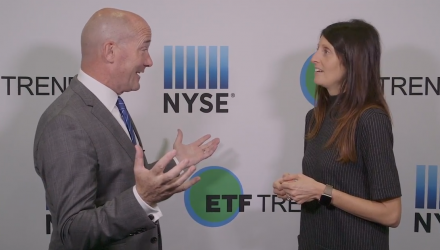“If you’re looking at JPST, you’re getting about 70% of the yield of the ‘Agg’ for a fraction of the duration – less than 10% of the duration, so it’s been a really great story for advisors who’re look to pull that in but not lose a lot of the yield that they were getting,” DelSignore said.
J.P. Morgan also has a line of U.S. smart beta ETFs, including broad strategies like the JPMorgan Diversified Return US Equity ETF (NYSEArca: JPUS), JPMorgan Diversified Return International Equity ETF (NYSEArca: JPIN) and JPMorgan Diversified Return Global Equity ETF (NYSEArca: JPGE), along with single-factor strategies, including the J.P. Morgan U.S. Value Factor ETF (NYSEArca: JVAL), J.P. Morgan U.S. Quality Factor ETF (NYSEArca: JQUA), J.P. Morgan U.S. Momentum Factor ETF (NYSEArca: JMOM), J.P. Morgan U.S. Minimum Volatility ETF (NYSEArca: JMIN) and J.P. Morgan U.S. Dividend ETF (NYSEArca: JDIV).
When considering factor-based investments or smart beta ETF strategies, investors may take broad strokes that cover multiple investment factors for a diversified approach or pick and choose individual factor exposures.
“We’ve been able to see them react during real life market scenarios, and what we’re seeing now is in this new spurt of volatility is these products performing exactly as designed – so being able to provide that lower downside volatility while again capturing a lot of the upside we’ve seen in markets,” DelSignore added.
For more market-related commentary from Tom Lydon and other industry experts, visit our video category.
